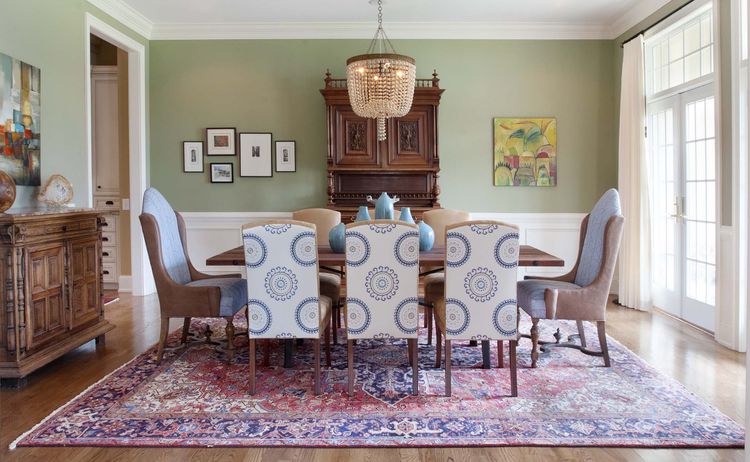
Classic interior design embodies a warm and inviting aesthetic, drawing inspiration from historical influences without being tied to a particular era. This style is characterized by its timelessness and versatility, creating a cozy and cohesive atmosphere that feels both familiar and sophisticated, yet not excessively ornate.
Contents
What defines the Traditional style of interior design?
Classic interior design is a widely favored decor approach that draws heavily from the styles of 18th and 19th-century Europe, embodying traditional ideas of home aesthetics.
The furnishings, fabrics, color schemes, and decorative elements found in traditionally styled spaces draw inspiration from historical influences, prioritizing familiarity over contemporary trends. For instance, a bedroom designed in a traditional manner may feature a subdued color palette, a headboard made of carved wood or upholstery, coordinating nightstands and lamps, a dresser, a cozy upholstered armchair with an ottoman, and perhaps a landscape painting adorning the wall.
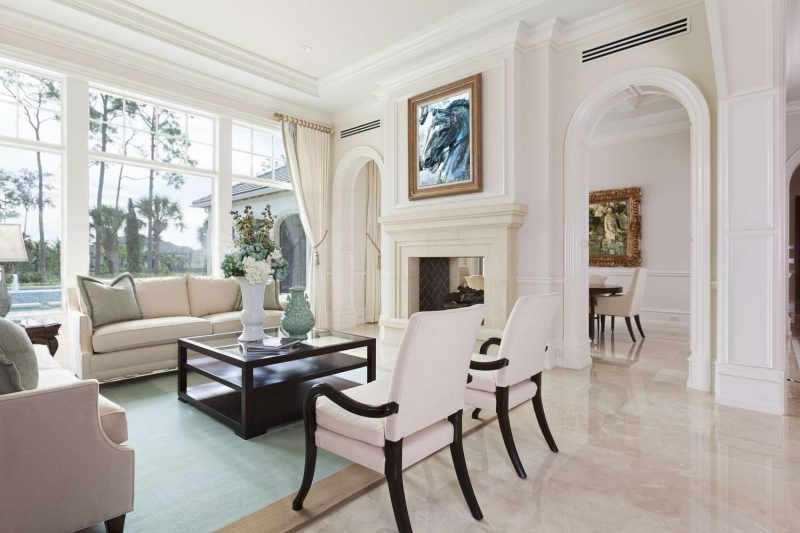
Roots of Classic Interior Design Aesthetic
The popularity of traditional interior design surged in the 20th century, driven by the expansion of postwar suburbs and a desire among individuals to replicate the styles of 18th- and 19th-century Europe, especially those of England and France.
Classic interior design maintains a calm and steady aesthetic, even as more dynamic, fashionable, and era-specific styles emerge and fade. During the midcentury modern movement, designers capitalized on innovative manufacturing techniques and the post-war housing surge to produce groundbreaking furniture and home items with contemporary materials. Meanwhile, enthusiasts of traditional design utilized these same manufacturing advancements to craft replicas of timeless pieces like Queen Anne chairs and Chippendale highboy dressers.
Classic design maintained its popularity among the general public, whereas the postmodern era of the 1980s introduced impactful yet fleeting movements like Memphis design, which questioned traditional ideas of color and shape.
Contemporary Approaches to Classic Design
Numerous Americans are raised in homes that embody a traditional style while incorporating modern comforts. The aim of crafting a traditional living room is not to impress but to establish a comforting environment for family life that is, ideally, refined, cozy, and subtle. Conversely, a traditional space can sometimes come across as dull, outdated, cramped, and lacking in creativity.
Classic interior design has gradually adapted to align with contemporary trends. For instance, numerous traditional residences today feature modern aspects like spacious kitchen islands and open-concept layouts. Modern designers tend to integrate contemporary furnishings, vibrant colors, and a blend of antique and vintage decor to craft a variation of traditional design, often referred to as a new traditional style. The trend known as granny chic has emerged, thanks to the grandmillennial generation. Additionally, the style known as transitional design has gained popularity as a cherished blend of traditional and modern aesthetics.
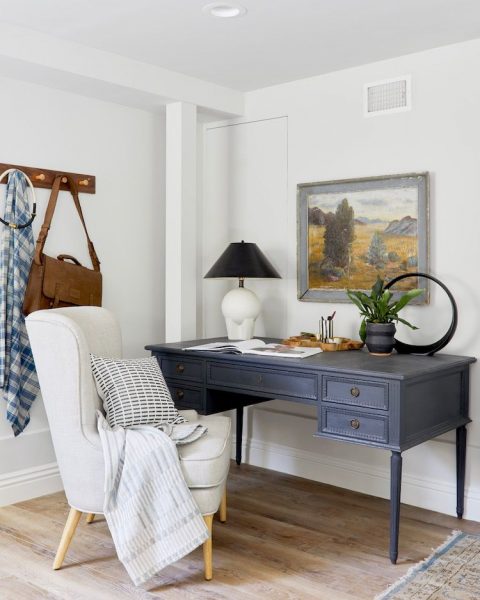
Conventional Design Methods
Designers employ various strategies and approaches to craft a classic interior space. This involves selecting particular pieces of furniture, arranging them with a focus on symmetry, utilizing distinct color schemes and finishes, and incorporating architectural features. The furniture, decorations, and artwork draw heavily from European design, especially from the 18th and 19th centuries, with a strong emphasis on styles from England and France. These elements tend to be polished and sophisticated, yet they often feature simpler ornamental details.
Emphasizing symmetry results in a practical and inviting environment. This balance is accomplished through the use of matching armchairs, lamps, and pieces of art, contributing to a cohesive atmosphere instead of a space characterized by stark contrasts and opposing elements.
Classic color schemes often feature soft neutrals complemented by occasional vibrant hues. Typically, walls are adorned with understated neutral tones, while flooring and furniture showcase deeper wood finishes. Traditional design may incorporate architectural details like crown molding and wainscoting.
Essential Features of Classic Interior Design Style
- Textiles and soft furnishings in gentle hues featuring stripes, floral patterns, and plaid designs.
- Traditional lighting elements like pendant lights, wall sconces, or chandeliers.
- Reproductions of Persian-style or antique rugs.
- Cozy, deep wooden hues like walnut for furnishings and darker finishes for the flooring.
- Layered window coverings (without the elaborate curtain valances)
- Decorative wallpaper featuring classic designs like floral patterns, stripes, or damask.
- Fabrics including thick cotton, wool, velvet, fur, and silk.
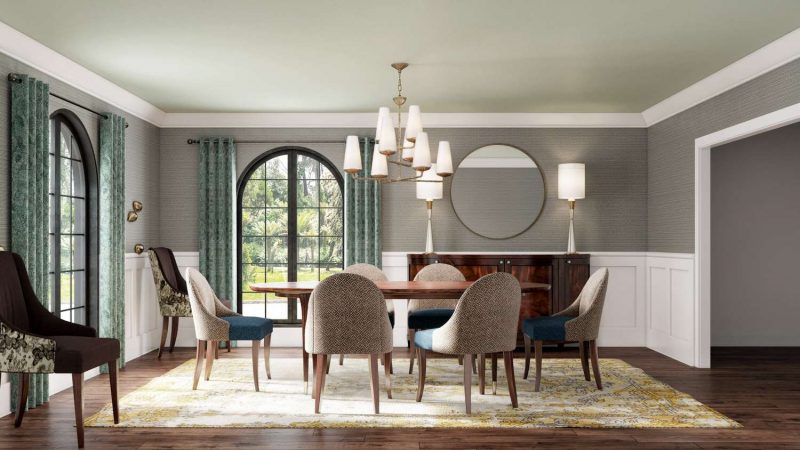
Classic Interior Design Decorating Suggestions
- Focus on arranging furniture with an emphasis on balance, movement, and harmony to create spaces that are welcoming and functional for families.
- Opt for a color scheme that emphasizes soft, earthy tones for a more understated look.
- Seek out items that complement each other in terms of style and color, but steer clear of matching sets, as they can give a space a showroom-like appearance.
- Incorporate classic elements like tablecloths, candelabras, antique silverware, china sets, and vintage linens, but do so thoughtfully and selectively to maintain a fresh and organized appearance.
- Incorporate a mix of antiques, modern items, unconventional features, or retro artwork that complements the overall aesthetic, enhances depth, and fosters a more individualized and unforgettable environment.
Illustrations of Classic Interior Design Style
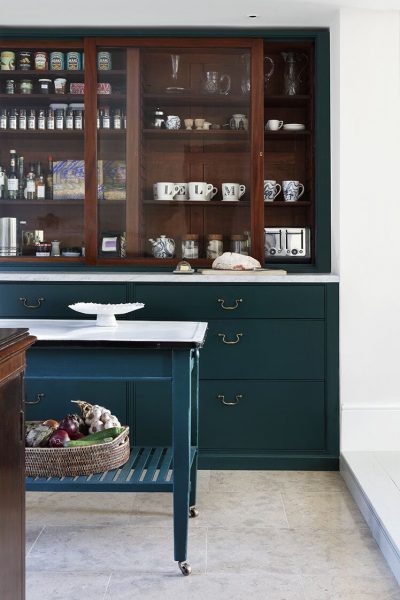
Studio Peake combined deep-hued stained wood with peacock blue paint and brass swan neck cabinet handles to refresh the glass-front pantry shelves in this classic London kitchen.
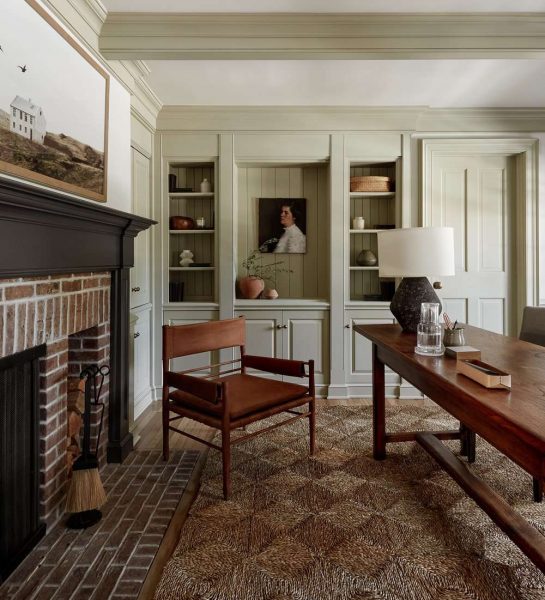
A brick fireplace imparts a classic ambiance to any space. This home office, designed by Becca Interiors, features a red brick fireplace complemented by a black-painted wooden mantel, sage green built-in shelves, and a vintage farmhouse table serving as a desk. A jute rug enhances the hardwood flooring, creating a timeless aesthetic.
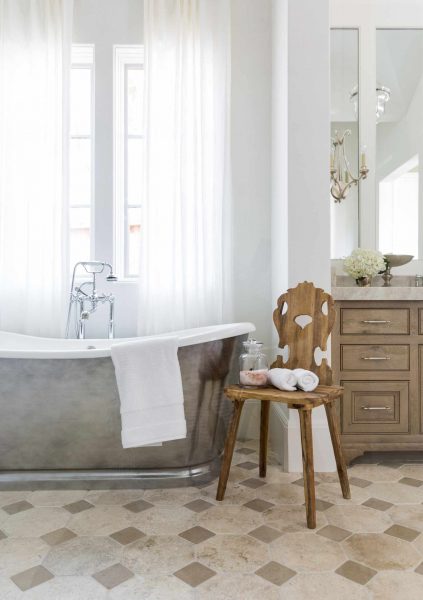
A standalone garden tub brings a touch of classic sophistication to a contemporary bathroom. In this expansive primary bathroom, Marie Flanigan Interiors combined a silver tub with cozy wooden elements and crisp white walls, creating a fresh traditional ambiance.
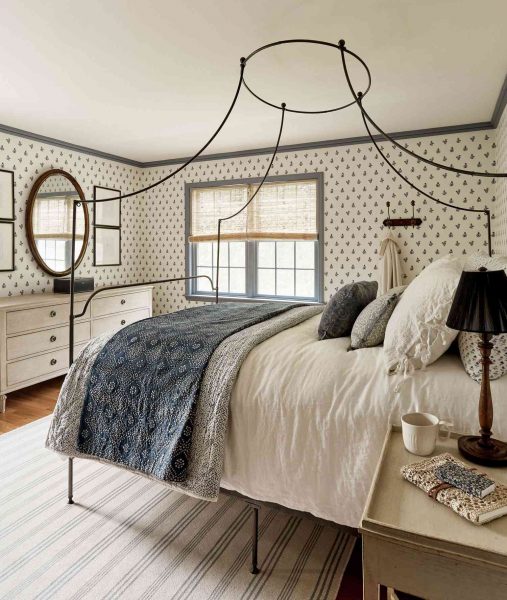
Classic design complements older or historic homes beautifully. Becca Interiors revitalized this master bedroom using black-and-white wallpaper, fresh paint, and decorative fabrics.
A sleek, contemporary metal canopy bed serves as a striking centerpiece, organizing the room while maintaining a light visual presence. Plush pillows and blankets create a warm and inviting atmosphere.
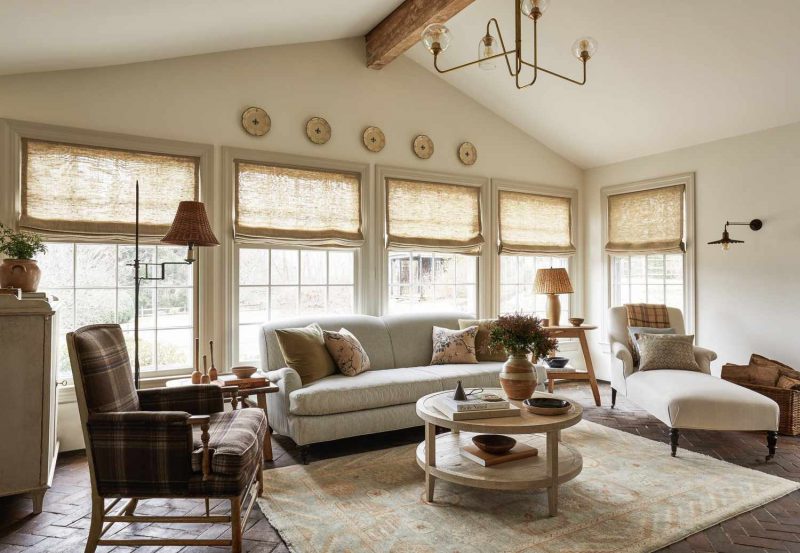
The calming atmosphere of this classic living room is achieved through a neutral color scheme and a blend of contemporary and vintage furnishings featuring traditional silhouettes. Becca Interiors revitalized this carriage house space using a soft palette of cream, beige, and brown, which is reflected in the walls, a newly upholstered chaise longue, and a vintage-inspired sofa. The room is enhanced by farmhouse-style lighting, a collection of decorative wall plates, and herringbone-patterned brick floor tiles, contributing to its enduring charm.
Is classic interior design still fashionable?
Classic interior design remains popular among those who favor cozy, subtle, and inviting spaces. Generally, traditional interiors are refreshed to accommodate the needs of contemporary lifestyles.
What defines the contemporary interpretation of traditional design?
Classic design is deeply embedded in heritage, yet it continually adapts to reflect contemporary comforts and shifting preferences. The new traditional style blends modern features such as central kitchen islands, open layouts, vibrant colors, and modern accents with antique, vintage, or replica furnishings and decor.
What distinguishes classic interior design from traditional interior design?
Conventional interior design primarily draws inspiration from European styles of the 18th and 19th centuries, along with established ideas of home aesthetics. Although numerous elements of traditional design are seen as timeless, they can also be perceived as outdated. Classic design encompasses styles from various eras that possess a lasting, timeless quality, including midcentury modern furnishings and decor that, while innovative in the 20th century, continue to resonate today.
What defines a home as traditional?
A classic residence may not be fashionable or modern, yet it boasts enduring architectural elements, furnishings, and decorations.

